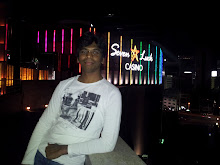Rotation 3d
package com.dci;
import com.dci.R;
import android.app.Activity;
import android.os.Bundle;
import android.widget.ListView;
import android.widget.ArrayAdapter;
import android.widget.AdapterView;
import android.widget.ImageView;
import android.view.View;
import android.view.ViewGroup;
import android.view.animation.Animation;
import android.view.animation.AccelerateInterpolator;
import android.view.animation.DecelerateInterpolator;
public class Transition3d extends Activity implements
AdapterView.OnItemClickListener, View.OnClickListener
{
private ListView mPhotosList;
private ViewGroup mContainer;
private ImageView mImageView;
// Names of the photos we show in the list
private static final String[] PHOTOS_NAMES = new String[]
{
"Lyon",
"Livermore",
"Tahoe Pier",
"Lake Tahoe",
"Grand Canyon",
"Bodie"
};
// Resource identifiers for the photos we want to display
private static final int[] PHOTOS_RESOURCES = new int[]
{
R.drawable.photo1,
R.drawable.photo2,
R.drawable.photo3,
R.drawable.photo4,
R.drawable.photo5,
R.drawable.photo6
};
@Override
protected void onCreate(Bundle savedInstanceState)
{
super.onCreate(savedInstanceState);
setContentView(R.layout.animations_main_screen);
mPhotosList = (ListView) findViewById(android.R.id.list);
mImageView = (ImageView) findViewById(R.id.picture);
mContainer = (ViewGroup) findViewById(R.id.container);
// Prepare the ListView
final ArrayAdapter
android.R.layout.simple_list_item_1, PHOTOS_NAMES);
mPhotosList.setAdapter(adapter);
mPhotosList.setOnItemClickListener(this);
// Prepare the ImageView
mImageView.setClickable(true);
mImageView.setFocusable(true);
mImageView.setOnClickListener(this);
// Since we are caching large views, we want to keep their cache
// between each animation
mContainer.setPersistentDrawingCache(ViewGroup.PERSISTENT_ANIMATION_CACHE);
}
/**
* Setup a new 3D rotation on the container view.
*
* @param position the item that was clicked to show a picture, or -1 to show the list
* @param start the start angle at which the rotation must begin
* @param end the end angle of the rotation
*/
private void applyRotation(int position, float start, float end) {
// Find the center of the container
final float centerX = mContainer.getWidth() / 2.0f;
final float centerY = mContainer.getHeight() / 2.0f;
// Create a new 3D rotation with the supplied parameter
// The animation listener is used to trigger the next animation
final Rotate3dAnimation rotation =
new Rotate3dAnimation(start, end, centerX, centerY, 310.0f, true);
rotation.setDuration(500);
rotation.setFillAfter(true);
rotation.setInterpolator(new AccelerateInterpolator());
rotation.setAnimationListener(new DisplayNextView(position));
mContainer.startAnimation(rotation);
}
public void onItemClick(AdapterView parent, View v, int position, long id) {
// Pre-load the image then start the animation
mImageView.setImageResource(PHOTOS_RESOURCES[position]);
applyRotation(position, 0, 90);
}
public void onClick(View v) {
applyRotation(-1, 180, 90);
}
/**
* This class listens for the end of the first half of the animation.
* It then posts a new action that effectively swaps the views when the container
* is rotated 90 degrees and thus invisible.
*/
private final class DisplayNextView implements Animation.AnimationListener {
private final int mPosition;
private DisplayNextView(int position) {
mPosition = position;
}
public void onAnimationStart(Animation animation) {
}
public void onAnimationEnd(Animation animation) {p
mContainer.post(new SwapViews(mPosition));
}
public void onAnimationRepeat(Animation animation) {
}
}
/**
* This class is responsible for swapping the views and start the second
* half of the animation.
*/
private final class SwapViews implements Runnable
{
private final int mPosition;
public SwapViews(int position)
{
mPosition = position;
}
public void run() {
final float centerX = mContainer.getWidth() / 2.0f;
final float centerY = mContainer.getHeight() / 2.0f;
Rotate3dAnimation rotation;
if (mPosition > -1) {
mPhotosList.setVisibility(View.GONE);
mImageView.setVisibility(View.VISIBLE);
mImageView.requestFocus();
rotation = new Rotate3dAnimation(90, 180, centerX, centerY, 310.0f, false);
} else {
mImageView.setVisibility(View.GONE);
mPhotosList.setVisibility(View.VISIBLE);
mPhotosList.requestFocus();
rotation = new Rotate3dAnimation(90, 0, centerX, centerY, 310.0f, false);
}
rotation.setDuration(500);
rotation.setFillAfter(true);
rotation.setInterpolator(new DecelerateInterpolator());
mContainer.startAnimation(rotation);
}
}
}
/*
* Copyright (C) 2007 The Android Open Source Project
*
* Licensed under the Apache License, Version 2.0 (the "License");
* you may not use this file except in compliance with the License.
* You may obtain a copy of the License at
*
* http://www.apache.org/licenses/LICENSE-2.0
*
* Unless required by applicable law or agreed to in writing, software
* distributed under the License is distributed on an "AS IS" BASIS,
* WITHOUT WARRANTIES OR CONDITIONS OF ANY KIND, either express or implied.
* See the License for the specific language governing permissions and
* limitations under the License.
*/
package com.dci;
import android.view.animation.Animation;
import android.view.animation.Transformation;
import android.graphics.Camera;
import android.graphics.Matrix;
public class Rotate3dAnimation extends Animation
{
private final float mFromDegrees;
private final float mToDegrees;
private final float mCenterX;
private final float mCenterY;
private final float mDepthZ;
private final boolean mReverse;
private Camera mCamera;
/**
* Creates a new 3D rotation on the Y axis. The rotation is defined by its
* start angle and its end angle. Both angles are in degrees. The rotation
* is performed around a center point on the 2D space, definied by a pair
* of X and Y coordinates, called centerX and centerY. When the animation
* starts, a translation on the Z axis (depth) is performed. The length
* of the translation can be specified, as well as whether the translation
* should be reversed in time.
*
* @param fromDegrees the start angle of the 3D rotation
* @param toDegrees the end angle of the 3D rotation
* @param centerX the X center of the 3D rotation
* @param centerY the Y center of the 3D rotation
* @param reverse true if the translation should be reversed, false otherwise
*/
public Rotate3dAnimation(float fromDegrees, float toDegrees,
float centerX, float centerY, float depthZ, boolean reverse)
{
mFromDegrees = fromDegrees;
mToDegrees = toDegrees;
mCenterX = centerX;
mCenterY = centerY;
mDepthZ = depthZ;
mReverse = reverse;
}
@Override
public void initialize(int width, int height, int parentWidth, int parentHeight) {
super.initialize(width, height, parentWidth, parentHeight);
mCamera = new Camera();
}
@Override
protected void applyTransformation(float interpolatedTime, Transformation t) {
final float fromDegrees = mFromDegrees;
float degrees = fromDegrees + ((mToDegrees - fromDegrees) * interpolatedTime);
final float centerX = mCenterX;
final float centerY = mCenterY;
final Camera camera = mCamera;
final Matrix matrix = t.getMatrix();
camera.save();
if (mReverse) {
camera.translate(0.0f, 0.0f, mDepthZ * interpolatedTime);
} else {
camera.translate(0.0f, 0.0f, mDepthZ * (1.0f - interpolatedTime));
}
camera.rotateY(degrees);
camera.getMatrix(matrix);
camera.restore();
matrix.preTranslate(-centerX, -centerY);
matrix.postTranslate(centerX, centerY);
}
}
Create One Folder name anim
keep the two file on to that
and save it as layout_bottom_to_top_slide.xml
and one more file
save it as slide_right.xml
save it as a animations_main_screen.xml

No comments:
Post a Comment